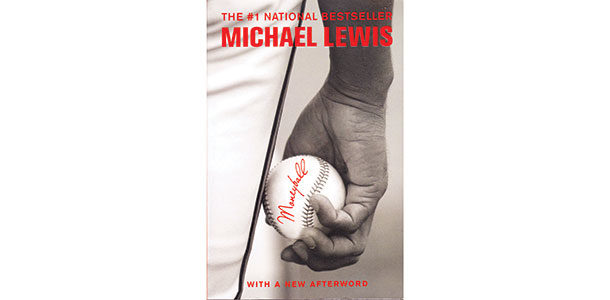There’s a classic book-turned-movie that has striking parallels between the business of baseball and the business of dairying. Moneyball tells the story of Oakland A’s general manager Billy Beane, who transformed baseball by bucking the traditional approach to the game in favor of numerical analysis that would help his team compete in an “unfair” environment.
“The war between intuition and statistics.” That’s how the late Roger Ebert described Moneyball. That’s how we would describe commodity price risk management, too. When you watch Moneyball, you’ll see how this war can be won with innovative thinking and consistency of approach.
If the war was won in baseball, can it happen on your dairy, too?
I believe it can because we see the scenes of this movie playing out every day among our clients. The dairy producers who are winning the war of emotions with regard to market prices are also winning in the dairy business.
Here are a few important dairy business themes to ponder as you watch:
Base decisions on math, not intuition
In Moneyball, the scouts recommended potential players based on traditional, fundamental skills. The way those skills were measured created the statistics that were tracked and talked about in the media. The hype produced star players. And expensive salaries.
Beane and his analytical guru, Peter Brand, teamed up to determine which statistics really mattered in creating wins. Does the player get on base? It doesn’t matter if it’s a walk or a single. A base runner can become a run, and runs win games.
Looking at the math led Beane to question the wisdom of the scouts around him. “If he’s a good hitter, why doesn’t he hit good?” Diving into statistics that actually mattered led Beane to his revolutionary approach and helped him build a winning team on a shoestring budget.
How many dairy producers follow their intuition about prices or listen to what’s being said by people who supposedly know where prices will go? How many ignore the cold hard facts that disprove those beliefs?
Dive into the data and question what everyone else says. The 2014 corn market is a perfect example of data showing different potential price scenarios than the fundamentals and hype that made headlines. (Click here to see our article from the October 1 issue of Progressive Dairyman.)
Think aggregate. Beane was faced with the challenge of replacing three all-stars, each with great statistics. Since Beane couldn’t afford to buy replacements with the same market value, he needed to replace them “in the aggregate.” GMs should be trying to buy wins, and to do so, find players who can get on base and produce runs.
Similarly, price risk managers should be thinking about creating incremental advantage over an extended period of time. Quit trying to win on a position, pick a high or pick a price direction. Picking the high on one small sale is the same as keeping the star on your team which is currently ranked last in the division. It’s pointless.
“Adapt or die.” As Beane and Brand put together a team of inexpensive, undervalued players who on paper could produce runs, they faced much criticism. Beane was assembling no-name players based on a theory that went against all the traditions in baseball. The A’s manager didn’t agree and often changed the line-up, abandoning Beane’s calculated approach to manufacturing runs.
Beane struggled to convince others that his plan would work if executed properly. In his mind, innovation was the key to competing against the teams with huge payrolls. “It’s an unfair game … We’ve got to think differently,” Beane said.
Similarly, dairy producers are faced with margin pressures and the desire to secure the best possible prices for feed and milk. With innovative thinking, you can use tools to methodically build the best feed and milk prices the market will offer. You may not get the best price every time; however, you can produce a great average price in the aggregate. Build a good price with solid, consistent decisions over time.
Give it a season. The A’s season gets off to a rocky start because the players and manager have not completely bought into Beane’s approach. Many call Beane a radical.
Beane sits in the team owner’s office and defends his approach: “I believe the record doesn’t accurately reflect the strength of this team and where we’re going to be at the end of the season.” He proceeds to explain that the goal is to be within seven games of first place by the All-Star break. He asks for time for his plan to evolve.
Price risk managers experience this pressure all the time. You make a decision, and then the market moves against you and everyone is questioning your approach.
“We need to stay on the track we’ve chosen,” Beane tells the A’s owner. Then he proceeds to communicate with his players about the math behind his approach. Staying on track with the strategies, sharing the “whys” with others, using statistics to overcome emotion – these were keys to Beane achieving buy-in from his team.
A baseball season is 181 games, and a new approach requires patience for results to show. What is the equivalent for dairy producers to see results from a price risk management approach?
What if you committed to following 181 recommendations from your adviser in your quest to build a solid weighted-average price? What if you stayed the course and evaluated your results after a season of consistency?
“The first one through the wall always gets bloody.” Billy Beane’s A’s won the same number of games the Yankees won in 2002, except the Yankees spent $1.4 million per win and the A’s spent $260,000 per win.
The season did not feel like an emotional success, but it got the attention of those who understand the business of baseball. Beane’s approach to the game was quickly adopted by teams all over the league.
Few gave him credit. That would be admitting there is more science to baseball than there is romance.
Billy Beane innovated his way to winning on an unfair playing field. What will you do to “change the game” for your dairy?
Do it for this season and for the many to come. PD
DISCLAIMER: Futures trading is not for everyone. The risk of loss in trading is substantial. Therefore carefully consider whether such trading is suitable for you in light of your financial condition. There are no guarantees that using strategies, consistency or discipline will translate into successful marketing.

Patrick Patton
Director of Client Services
Stewart-Peterson Inc.
Moneyball synopsis
Moneyball is the 2011 movie based on the book by Michael Lewis. It is the story of the financially disadvantaged Oakland Athletics (A’s) baseball team, challenged to compete against teams with much higher payrolls. In the 2002 season, the New York Yankees had a payroll of $126 million. The A’s general manager, Billy Beane, was forced to compete with a payroll of $40 million.
Beane tries to convince those around him, including the old-time, traditional player scouts and the team’s manager, that the only way to win is to think differently about how games are won.
He discovers a young mathematician from Yale, Peter Brand, and recruits him to analyze players available at a lower price tag than the game’s stars. Beane’s approach is to create baseball stars “in the aggregate,” emphasizing on-base percentage rather than star quality.
The team of “undervalued” players can only produce wins if Beane convinces everyone to stick with the system he envisions. Despite a rocky start and in the face of much naysaying, Beane remains consistent and committed to his approach. The A’s performance defies conventional wisdom, and in the end, changes the game of baseball forever.







